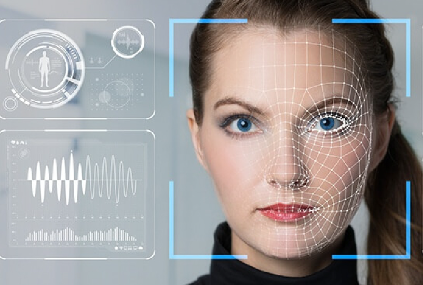Combating Cyberattacks | Ensure Face Anti-Spoofing Solution in Digital System

To combat the rising threat of identity theft, it’s crucial to incorporate robust measures like ensuring the integration of face anti-spoofing solutions in digital systems. This proactive approach strengthens security by preventing fraudulent attempts that exploit facial recognition technology. By leveraging face anti-spoofing solutions, organizations enhance the resilience of their digital systems against spoofing attacks and protect sensitive data by preserving the integrity of identity verification processes.
In 2022, about 9 /100 cyberattacks around the world happened on mobile phones. People all over the world faced over 2.2 million cyberattacks on their mobile phones in December 2022 alone.
Explore the Complete Process of Face Liveness Detection
Face spoof detection is an advanced technique that utilizes algorithms to detect the original source of the biometric sample, which usually comes from a fake depiction in a live verification process. The biometric sample is the face images captured by the user. The liveness detection technique recognizes the presentation attacks executed by imposters for deceiving online systems for some illegal gains. The presentation attacks are usually in the form of masks, fake videos, or photos. The Al-base liveness detection examines the live users by recognizing the active and passive movements happening around in a digital video validation. Potential imposters try to scam the system by utilizing fake masks and pretending to be the ones who he is not.
For a complete face detection process, liveness techniques ensure two significant methods for recognizing the illegal activities executed the potentials. Active and passive liveness are the two key components of face detection and recognition. Active liveness methods ensure the verification of the current movements that are asked to be performed by the user. It is mainly done to verify the live presence of the customers by asking for some prompt actions such as movement of the head to the right side or left, iris rotation, and blinking of the eyes. Meanwhile, passive liveness methods are executed to identify the activities happening in the background. These passive methods actively work without informing their live customers during the digital authentication of the users.
In extreme cases, hybrid liveness methods are employed to mitigate any potential fraudulent activities happening. Hybrid liveness detection ensures the integration of active and passive methods for identifying the more detailed scrutinization. These advanced methods are also utilized to identify deep fake face verification.
How Face Anti-Spoofing Solution Assist in Combating Potential Frauds
Face anti-spoofing technology utilizes liveness detection techniques to maintain strong security measures in today’s digital environment. As businesses are moving towards online platforms to provide their services, the need to ensure face detection methods has also increased. Because every system wants to maintain its integrity, it is important to authenticate the identities of the customers to mitigate any chances of illegal activities. There are following ways how an anti-spoofing solution helps streamline the operations of different systems.
Streamlined Enrollment
Face anti-spoofing solution helps in ensuring the smooth onboarding procedure of the customers in digital enrollment by executing advanced verification methods. It makes the system more secure by validating the user’s identities.
Secure Account Management
Anti-spoofing mechanisms protect customers’ digital accounts by ensuring liveness detection methods, which reduce the chances of identity theft in this digital realm. Potential imposters cannot hack the customer’s accounts by preventing duplicate sign-ups, thus improving the user experience compared to traditional verification methods.
Synthetic MediaForgery
Face anti-spoofing solution comprises the 3D liveness detection that actively identifies the synthetic media forgery, such as deep fakes, which is difficult to identify through a traditional validation process. Users provide fake biometrics while traveling to execute the global transaction. To combat these attacks, liveness detection is recognized as an advanced solution to this problem.
Three-Dimensional Facial Prosthetics
In the online verification process, fraudsters try to scam by utilizing 3D face masks in biometric facial recognition. These silicon masks are difficult to recognize through simple verification procedures, but face anti-spoofing solutions can easily detect these activities through micro-expression analysis.
See Also: How To Retain High-Paying Web Design Clients (10 Key Factors)
Printed Images
This method includes the utilization of a photograph of the other user to falsify the recognition systems. The printed photographs can be downloaded digitally printed and presented online to emulate the other person.
Final Verdict
Ensuring the implementation of a face anti-spoofing solution in digital systems is essential for enhancing security and protecting against identity fraud. By actively integrating such solutions, organizations can effectively prevent unauthorized access and fraudulent activities that exploit facial recognition technology. This proactive approach strengthens the integrity of identity verification processes, and fosters trust among users by protecting sensitive data. As the threat landscape continues to evolve, the adoption of face anti-spoofing solutions remains a critical component in creating digital security. It assists in mitigating risks associated with identity theft and cyberattacks.


